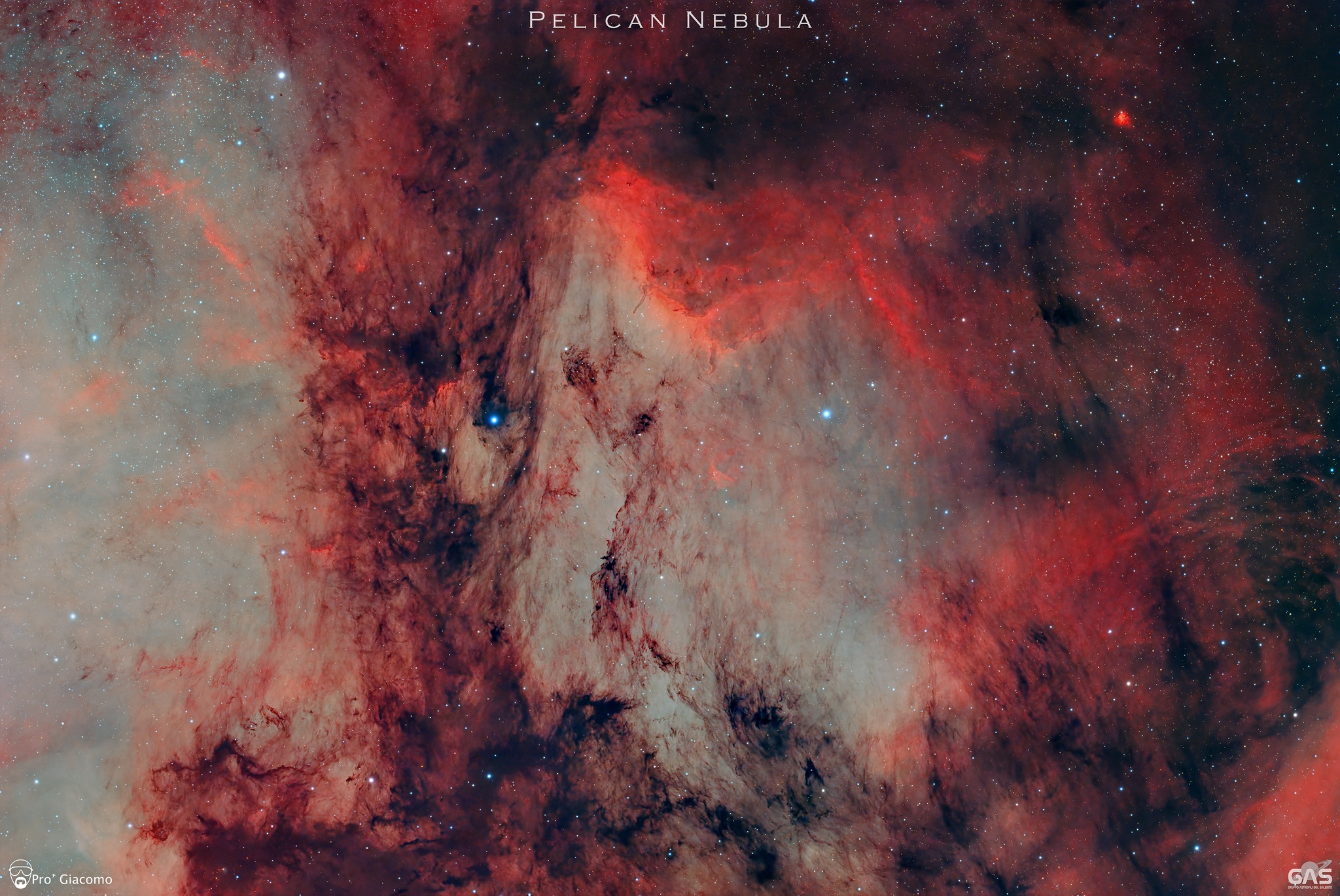The Pelican Nebula + Giacomo Pro + L-UItimate
The Pelican Nebula
Credit: Giacomo Pro (Italy)
Filter: Optolong L-UItimate filter
The Pelican Nebula
Known as IC 5067/70 is an H II region visible in the constellation Swan, near Deneb (the tail of the swan and its brightest star); it belongs to the same giant molecular cloud as the nearby North American Nebula and is easily photographed. Its distance is estimated to be around 2000 light years.
The nebula is reminiscent of a pelican, due to a dark nebula marking the northern edge of the object, thus making it resemble a pelican's beak; from an astronomical point of view, it is an emission nebula, which has been much studied due to the star formation phenomena occurring within it. Due to the strong dynamics of its gases, the nebula will change shape relatively quickly.
The Pelican Nebula, although smaller and less conspicuous than the neighbouring North American Nebula, easily appears in an amateur telescope less than a degree south-west of the latter, from which it is separated by a dark band known as LDN 935; photographs taken at higher and higher magnifications allow more and more details to be detected, although the overall view is lost.
Due to its special shape, it is one of the best known and most photographed nebulous objects in the northern hemisphere.
Light 110 x 300" filter: Optolong Astronomy Filter L-Ultimate
Camera: Asi 294 mc pro
Telescope: Sharpstar 94 EDPH reduced to 410 mm F/4.4
Guide camera: Asi 120 mini
Guide scope: 60 - 320 mm
Mount: Skywatcher Eq 6-r Pro
Acquisition: Asiair Plus
Software: DSS - Pixinsight - Photoshop
Shots: 13-14/07/2024
Location: Torricella (TA) ITALY
Average moon phase: 53.25%
Author: PRO' GIACOMO.





